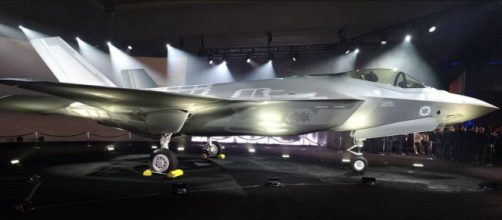The Japanese Defense Ministry isn’t shy about its plans to build its very own sixth-generation fighter aircraft. The defense ministry is reportedly preparing for their planned future fighter program. But before they start the aircraft development, they need to set up first the new Future Fighter Development Office, which will handle all the development works for the future fighter program.
According to Aviation Week, which got the full details of the story, the Japanese Defense Ministry has proposed plans for a new Future Fighter Development Office, which is set to start operation in April 2020.
The planned Future Fighter Development Office was first mentioned in the August 30 budget request for fiscal 2020. In the budget request, the Japanese Defense Ministry urged the Japanese government to authorize the launch of a Japan-led aircraft development program that can play a crucial role in the development of the country’s next fighter aircraft. However, the defense ministry hasn’t mentioned anything about the funding figure.
The new development office is the first big step in the country’s journey to build its very own sixth-generation air superiority aircraft. The Future Fighter Development Office would be set up in the Defense Ministry’s Acquisition, Technology and Logistics Agency, according to the aerospace and defense website Aviation Week.
Mitsubishi Heavy Industries to likely join the fighter program
The Japanese Defense Ministry is reportedly keen on developing its six-generation air superiority aircraft. The Aviation Week website learned that the planned Future Fighter Development will be indispensable and the defense ministry will likely team up with the Japanese firm Mitsubishi Heavy Industries.
In December 2018, the Japanese Defense Ministry confirmed plans to create an international program (under Japanese leadership) that will develop the country’s Future Fighter. The Japanese government plans to launch the fighter program sometime in the fiscal 2019-2023 budget request. The new fighter aircraft will replace the aging F-2 fighter that was built by Mitsubishi Heavy Industries.
The first flight test is expected sometime in 2030.
As mentioned earlier by Aviation Week, the Japanese are also looking for partner countries. The ideal candidate for the partner countries will have fighter programs with requirement timescales similar to the Japanese Defense Ministry. Unfortunately, the Japanese government has failed to attract partners for its future fighter program. A partnership with the US government is not likely to happen since the US military won’t allow sharing of high-end technology to other countries, including close allies like Britain and Japan.
Aside from countries, the Japanese government could also team up with a defense company, like the American technology giant Lockheed Martin, to help in their future fighter program.
The US-based defense contractor Lockheed Martin has already proposed a concept related to the Lockheed Martin-built F-22 Raptor, the USAF’s premier air-superiority fighter. As the country’s major combat aircraft maker, Mitsubishi Heavy Industries is likely to be selected by the Japanese government to help with the country’s fighter program. Mitsubishi is no longer a stranger to the Japanese defense agency. The company has already worked for a number of military contracts in the past years, including the F-2 fighter program.
More acquisitions and military hardware in the upcoming budget request
In other defense-related stories, the Japanese Defense Ministry plans to spend $165 million for the fiscal year of 2020.
The funding will be used on fighter mission system integration, which according to reports by Aviation Week, will cover artificial intelligence, integrating sensors, weapons, and drones that will be used to support the manned fighter aircraft.
In addition to the future fighter program, the Japanese Defense Ministry also plans some important acquisitions for the fiscal year 2020. These include 3 Boeing CH-47JA Chinook helicopter, 3 KHI P-1 maritime patrollers, 7 Sikorsky SH-60 K Seahawk, 8 UH-60J helicopters and 4 Boeing KC-46A Pegasus air refueling aircraft. The defense ministry also seeks fresh funding to extend the lives of 7 Lockheed Martin P-3C Orion, OP-3, 3 SH-60K and 2 SH-J, the Aviation Week reported.


